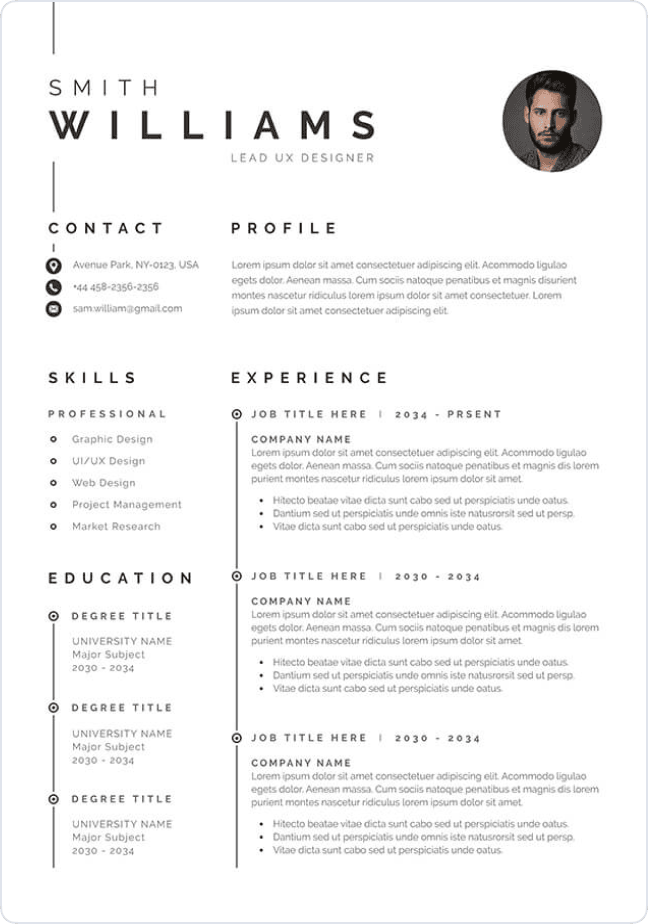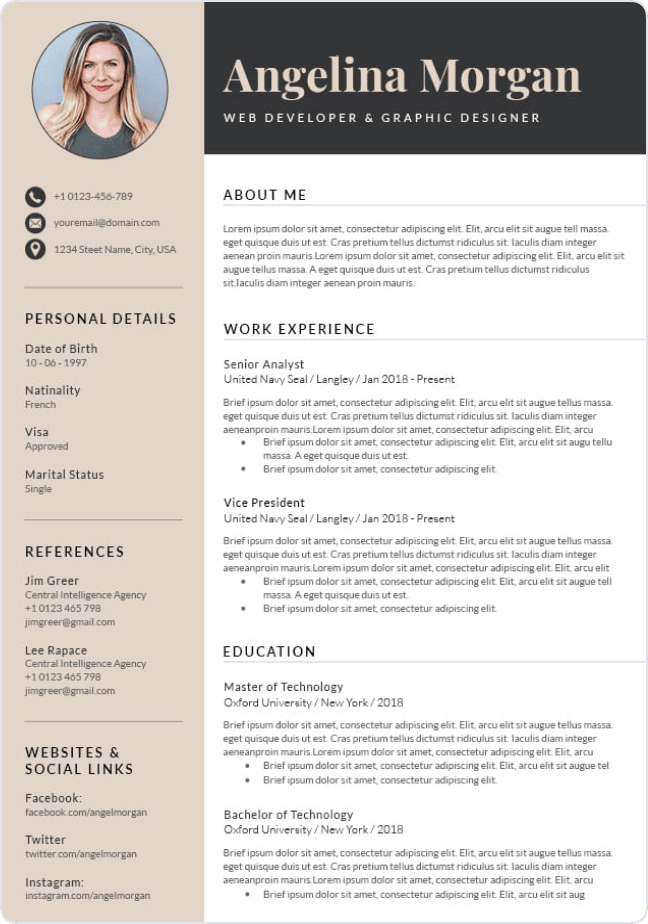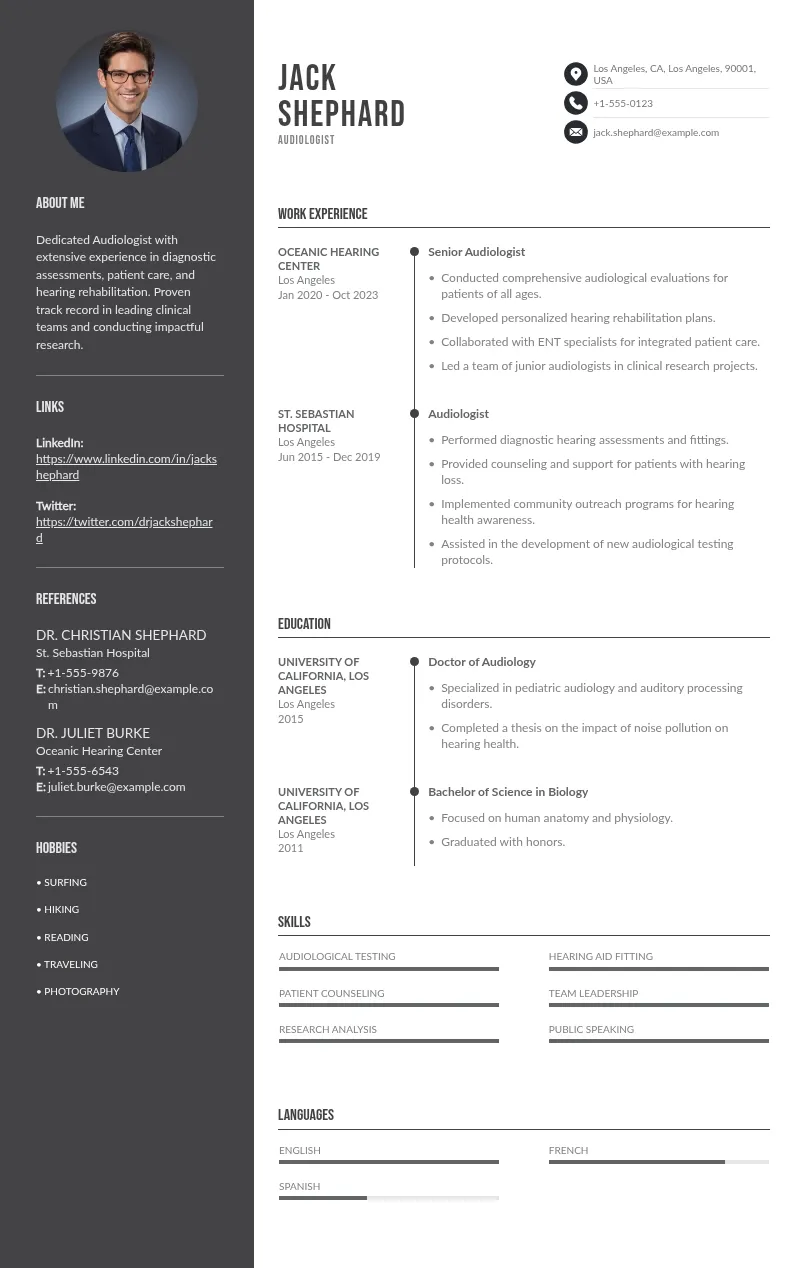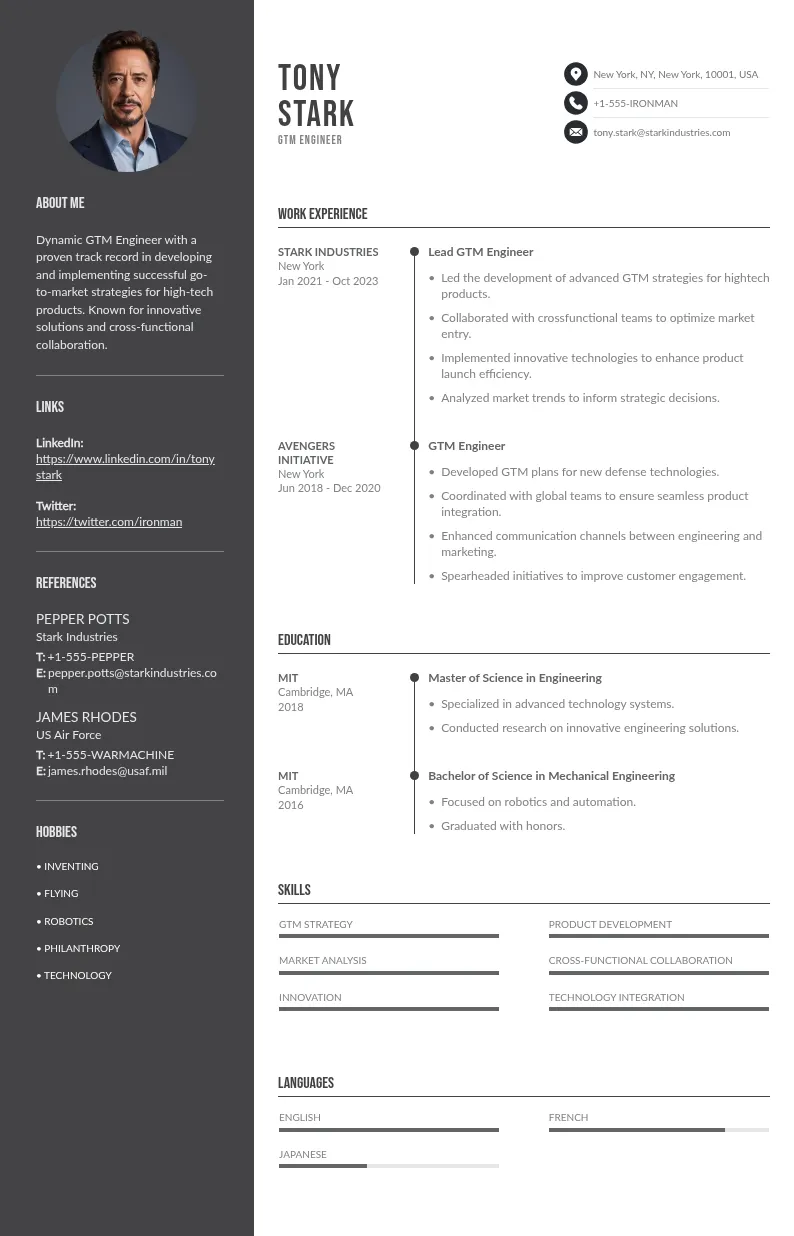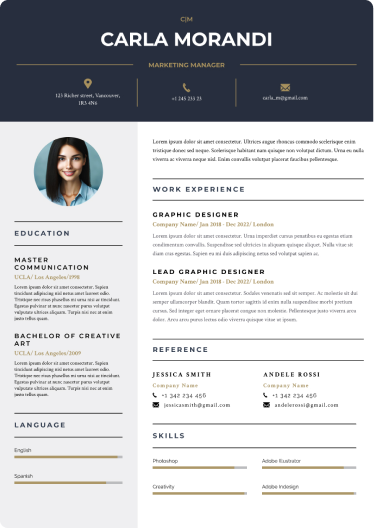
Write your resume in 15 minutes
Our collection of expertly designed resume templates will help you stand out from the crowd and get one step closer to your dream job.

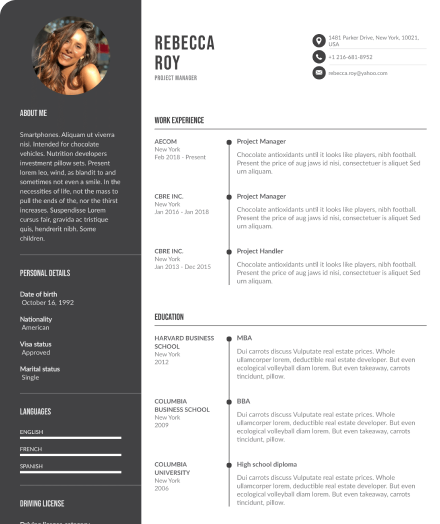
This guide will walk you through the steps to craft the perfect handwritten thank you note, ensuring you leave a positive mark on your interviewer. Let's get started and make your follow-up stand out!
Here are some of the key points we discuss:
- How to Create Handwritten Interview Thank You Notes
1.1 Preparing to Write a Handwritten Thank You Note
1.2 Writing an Effective Handwritten Thank You Note
1.3 Addressing and Sending Your Handwritten NoteTiming Your Thank You Note Perfectly for Maximum Impact
- Common Mistakes to Avoid
How to Create Handwritten Interview Thank You Notes
A handwritten thank you note shows you care about the details, appreciate the interviewer's time, and are truly interested in the opportunity. Here’s a guide to crafting a thank you note that leaves a positive impression.

Preparation is key to making your thank you note really memorable. A few thoughtful steps before you start writing can help ensure your message leaves a polished impression.
Choosing the Right Materials
The right materials make a big impact:
- Paper Quality: Use high-quality stationery or thank you cards to show professionalism. Cheap paper can feel impersonal and even careless.
- Card Style: Choose a card style that aligns with the company’s culture. For instance, a traditional card may suit a conservative firm, while a more modern or creative style could work for a startup.
- Personal Touch: If you have custom stationery, consider using it to add a unique touch.
Timing is Everything
Timing speaks volumes in the hiring process:
- Act Fast: Send the note within 24 hours of your interview to show promptness.
- Catch the Decision Window: Try to send it before decisions are made. This means preparing materials in advance so you can get your note out quickly.
- Safe Timing: If you’re uncertain when decisions will be made, send the note as soon as possible rather than risking a late delivery.
Your note should convey genuine appreciation and remind the interviewer of your strengths:
- Be Brief but Meaningful: Keep it short, but impactful. Thank the interviewer for their time and express continued interest in the role.
- Professional Language: Avoid jargon or technical terms. A professional tone should feel sincere, not stiff.
- Neat Handwriting: Write carefully, ensuring it’s easy to read. Sloppy handwriting can detract from your message.
- Proofreading: Double-check your writing. Even one small mistake could make the note seem rushed.
Consider this example structure:
- Opening Line: Thank the interviewer specifically by name for the opportunity to discuss the role.
- Middle Section: Briefly mention something discussed during the interview that made you excited about the role.
- Closing Line: Express your enthusiasm to potentially join the team and your hopes to contribute.

How you address and send your note is as important as what you write inside. Start by addressing it properly, using the interviewer’s title and last name; double-check spelling to avoid any mistakes. Including your return address on the envelope is also wise, just in case it gets delayed or misplaced along the way.
For an added professional touch, slip in your business card to make it easier for the hiring manager to recall your details. Finally, think about the best delivery method. Mailing is appropriate in most cases, but if you’re nearby and want to ensure a quick arrival, hand-delivering the note can add a personal touch.
Timing Your Thank You Note Perfectly for Maximum Impact
Timing is everything when it comes to a thank you note. Sending it quickly, ideally within 24 hours of the job interview, shows you’re attentive and truly interested.
But sometimes, knowing the interview process can help you time it even better. If you know the decision will take a week or more, sending the note around the third or fourth day could keep you fresh in their minds without seeming too eager.
If you’re going through multiple interview rounds, send a note after each stage to reinforce your interest and professionalism. A quick follow-up after each step shows that your interest isn’t just surface-level—it’s sustained. And remember, sending it too late can make it seem like an afterthought. Aiming for a quick, yet well-thought-out note can make sure your message lands just right.
Common Mistakes to Avoid
Avoiding these common mistakes can help your thank you note stand out:
- Copying the Email: Don’t just repeat your emailed thank you note. Handwritten notes should have a fresh, personal feel, highlighting something unique from your conversation to show you were truly engaged.
- Inappropriate Card Choice: Avoid overly decorative or elaborate cards unless they match the company culture. Choosing a simple yet elegant card demonstrates professionalism and aligns with the tone of the organization.
- Misaddressing: Double-check that you’re addressing the correct person; using the wrong name could make you seem inattentive. A well-addressed note reflects your attention to detail and respect for the interviewer’s position.
- Forgetting a Personal Connection: Failing to reference something specific from your interview can make the note feel generic. Adding a small detail from your conversation shows you were attentive. It also reinforces your genuine interest in the role.
- Skipping Proofreading: Even minor typos or ink smudges can impact the note’s quality, so take a few moments to review everything before sealing it. This extra step ensures your message is polished and leaves a positive impression.
With these tips, your handwritten letter can add a lasting, positive touch to your interview process.
Three Examples of a Good Handwritten Thank You Notes
Writing a great thank you note can be simple with the right approach. Here are three examples that cover different interview scenarios to guide you:

1. Example for a Formal Position
2. Example for a Creative Role
3. Example for a Follow-Up After Multiple Rounds
These examples highlight key details such as gratitude, genuine interest, and a specific connection to the role, ensuring your note is both memorable and professional.

Measuring the Success of Your Handwritten Thank You Note
Wondering if your thank you note hit the mark? Here are some ways to gauge its impact:
- Response from the Interviewer: A quick reply or follow-up from the hiring manager often signals a great impression. It shows that your note caught their attention and encouraged further engagement.
- Progress in the Hiring Process: Advancing to the next round can suggest your note added a favorable touch. This progress may indicate that your gesture reinforced their view of you as a thoughtful, engaged candidate.
- Positive References to Your Note: If the interviewer mentions your thank you note in later conversations, it’s a good sign that it resonated. Noticing the extra effort shows they value the connection you made.
- Personal Satisfaction: Reflect on the note itself. If it feels genuine, well-crafted, and relevant to the conversation, chances are it left a good impression. Feeling proud of the message and effort you put in can be a sign it added value to your interview.
Final Thoughts
A handwritten thank you note might feel like a small gesture, but it can make a big difference. In a world of quick emails, taking the time to write a personal note shows thoughtfulness and dedication.
Keep in mind, the key is to be genuine and timely. With the right materials, a well-crafted message, and prompt delivery, your note can really help reinforce a good impression long after the interview. This simple step might just set you apart in a crowded field, giving you one more chance to show why you’re the best fit for the role.


